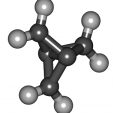
konsgn
-
Posts
3 -
Joined
-
Last visited
Reputation Activity
-
 konsgn got a reaction from tommy in New OPi Zero - Yet another high temperature issue...
konsgn got a reaction from tommy in New OPi Zero - Yet another high temperature issue...
Just a heads up, I think the bigger issue between the revision 1.1 and 1.4 is that they removed the "U5" buck AVCC/RTC 3.3V converter, Instead in its place they put a "R9" 0 ohm resistor from the GPIO 3.3v regulator "u55". As such it makes sense that they removed the "Q11" gpio voltage enable switch, since now that switch must always be on.
In testing the voltages, the Rev 1.1 GPIO VCC is 3.37v, whereas the AVCC/RTC Vcc is 3.27v.
For Rev1.4 though, the GPIO/AVCC/RTC Vcc is actually 3.4v.
I am currently removing "R9" from rev 1.4 and installing a diode to drop some voltage. It may help to keep the device from overheating. If that doesn't help, perhaps adding a secondary 3.3v buck regulator can fix the issue.
Update: With the diode to drop voltage, the resulting voltage on AVCC/RTC is 2.91V.
This results in the following temp readings stable/finger tested:
19:02:53: 1200MHz 0.71 19% 11% 6% 0% 1% 0% -2°C
19:02:58: 1008MHz 0.73 19% 11% 6% 0% 1% 0% -4°C
19:03:03: 240MHz 0.67 19% 11% 6% 0% 1% 0% -9°C
19:03:08: 240MHz 0.62 19% 11% 6% 0% 1% 0% -10°C
19:03:13: 240MHz 0.57 18% 10% 5% 0% 1% 0% -11°C
19:03:18: 240MHz 0.52 18% 10% 5% 0% 1% 0% -17°C
19:03:24: 240MHz 0.48 17% 10% 5% 0% 1% 0% -20°C
19:03:29: 240MHz 0.44 17% 10% 5% 0% 1% 0% -21°C
This leads me to believe that the temperature may not be significantly if at all different between v1.1 and v1.4. It would make sense for the slight voltage difference of voltage on the AVCC pins would change the internal temperature readings. They probably don't have any sort of voltage reference internally, and that would lead to any sort of internal reading based on analog voltages to be affected by voltage changes of the AVCC power.
I will test this with a power supply on the seperated AVCC/RTC to see if it does indeed result in different internal readouts.
Alright, here's what I found:
All of these results are running the armbianmonitor right after start up and each show a "finger test" draw represents draw on the Avcc/rtc from the power supply, and is quite stable.
Orangepi v1.4 test: r9 removed, AVCC&RTC=3.27 about 50mA draw during test:
Orangepi v1.4 test: r9 removed, AVCC&RTC=3.4V about 50mA draw during test:
Orangepi v1.4 test: r9 removed, AVCC&RTC=2.90V about 40-50mA draw during test
Results: The internal temperature sensing cannot be trusted, especially since there is no voltage reference.
Tomorrow I will try to place a 150mA 3.3V LDO regulator instead of "r9" and see if I can find a way to actually test temperature.
PS: I would add images if I could figure out how to do so outside of hosting them somewhere else.
Sidenote:
"R9" is glued down, so to minimize chance of lifting pads when desoldering try this:
1- apply generous amounts of flux from flux pen.
2) use solder wick to remove as much solder as possible
c Once all the solder is gone, rotate the part 90 degrees with flat end needle nose pliers while slightly pushing into the board.
If you managed to get enough solder off, the part should break free without lifting the pads. And if they do lift, you can always solder onto the test points on the board.
-
 konsgn got a reaction from bozden in New OPi Zero - Yet another high temperature issue...
konsgn got a reaction from bozden in New OPi Zero - Yet another high temperature issue...
I managed to test the 1.4 version with the set up in the image attached.
I admit the ti sensor tag thermopile sensor is not at all a good way to test it.
The test I ran:
I let the device cool down completely between tests, then set the power supply to a selected voltage (for powering AVCC/RTC) and logged in. Then I waited for about 3 minutes while looking at the output of the armbianmonitor -m for the temperature to stabilize. Then I ran the following command:
sysbench --test=cpu --cpu-max-prime=20000 run --num-threads=$(grep -c '^processor' /proc/cpuinfo) while watching the remote sensing temperature output from the sensor tag.
here is what I got:
and :
....According to the results, it runs faster and hotter at the expected temp of 3.3V.
I only tested a few times, but I am now of the opinion that these chips will run hot one way or another.
For my application, I will be giving it a 3.3V regulator and a nice heatsink.
Further testing would probably benefit from a more directly attached temperature sensor/ more accurate thermopile & logging.
-
 konsgn got a reaction from Michael Dehn Klit in New OPi Zero - Yet another high temperature issue...
konsgn got a reaction from Michael Dehn Klit in New OPi Zero - Yet another high temperature issue...
Just a heads up, I think the bigger issue between the revision 1.1 and 1.4 is that they removed the "U5" buck AVCC/RTC 3.3V converter, Instead in its place they put a "R9" 0 ohm resistor from the GPIO 3.3v regulator "u55". As such it makes sense that they removed the "Q11" gpio voltage enable switch, since now that switch must always be on.
In testing the voltages, the Rev 1.1 GPIO VCC is 3.37v, whereas the AVCC/RTC Vcc is 3.27v.
For Rev1.4 though, the GPIO/AVCC/RTC Vcc is actually 3.4v.
I am currently removing "R9" from rev 1.4 and installing a diode to drop some voltage. It may help to keep the device from overheating. If that doesn't help, perhaps adding a secondary 3.3v buck regulator can fix the issue.
Update: With the diode to drop voltage, the resulting voltage on AVCC/RTC is 2.91V.
This results in the following temp readings stable/finger tested:
19:02:53: 1200MHz 0.71 19% 11% 6% 0% 1% 0% -2°C
19:02:58: 1008MHz 0.73 19% 11% 6% 0% 1% 0% -4°C
19:03:03: 240MHz 0.67 19% 11% 6% 0% 1% 0% -9°C
19:03:08: 240MHz 0.62 19% 11% 6% 0% 1% 0% -10°C
19:03:13: 240MHz 0.57 18% 10% 5% 0% 1% 0% -11°C
19:03:18: 240MHz 0.52 18% 10% 5% 0% 1% 0% -17°C
19:03:24: 240MHz 0.48 17% 10% 5% 0% 1% 0% -20°C
19:03:29: 240MHz 0.44 17% 10% 5% 0% 1% 0% -21°C
This leads me to believe that the temperature may not be significantly if at all different between v1.1 and v1.4. It would make sense for the slight voltage difference of voltage on the AVCC pins would change the internal temperature readings. They probably don't have any sort of voltage reference internally, and that would lead to any sort of internal reading based on analog voltages to be affected by voltage changes of the AVCC power.
I will test this with a power supply on the seperated AVCC/RTC to see if it does indeed result in different internal readouts.
Alright, here's what I found:
All of these results are running the armbianmonitor right after start up and each show a "finger test" draw represents draw on the Avcc/rtc from the power supply, and is quite stable.
Orangepi v1.4 test: r9 removed, AVCC&RTC=3.27 about 50mA draw during test:
Orangepi v1.4 test: r9 removed, AVCC&RTC=3.4V about 50mA draw during test:
Orangepi v1.4 test: r9 removed, AVCC&RTC=2.90V about 40-50mA draw during test
Results: The internal temperature sensing cannot be trusted, especially since there is no voltage reference.
Tomorrow I will try to place a 150mA 3.3V LDO regulator instead of "r9" and see if I can find a way to actually test temperature.
PS: I would add images if I could figure out how to do so outside of hosting them somewhere else.
Sidenote:
"R9" is glued down, so to minimize chance of lifting pads when desoldering try this:
1- apply generous amounts of flux from flux pen.
2) use solder wick to remove as much solder as possible
c Once all the solder is gone, rotate the part 90 degrees with flat end needle nose pliers while slightly pushing into the board.
If you managed to get enough solder off, the part should break free without lifting the pads. And if they do lift, you can always solder onto the test points on the board.
-
 konsgn got a reaction from bozden in New OPi Zero - Yet another high temperature issue...
konsgn got a reaction from bozden in New OPi Zero - Yet another high temperature issue...
Just a heads up, I think the bigger issue between the revision 1.1 and 1.4 is that they removed the "U5" buck AVCC/RTC 3.3V converter, Instead in its place they put a "R9" 0 ohm resistor from the GPIO 3.3v regulator "u55". As such it makes sense that they removed the "Q11" gpio voltage enable switch, since now that switch must always be on.
In testing the voltages, the Rev 1.1 GPIO VCC is 3.37v, whereas the AVCC/RTC Vcc is 3.27v.
For Rev1.4 though, the GPIO/AVCC/RTC Vcc is actually 3.4v.
I am currently removing "R9" from rev 1.4 and installing a diode to drop some voltage. It may help to keep the device from overheating. If that doesn't help, perhaps adding a secondary 3.3v buck regulator can fix the issue.
Update: With the diode to drop voltage, the resulting voltage on AVCC/RTC is 2.91V.
This results in the following temp readings stable/finger tested:
19:02:53: 1200MHz 0.71 19% 11% 6% 0% 1% 0% -2°C
19:02:58: 1008MHz 0.73 19% 11% 6% 0% 1% 0% -4°C
19:03:03: 240MHz 0.67 19% 11% 6% 0% 1% 0% -9°C
19:03:08: 240MHz 0.62 19% 11% 6% 0% 1% 0% -10°C
19:03:13: 240MHz 0.57 18% 10% 5% 0% 1% 0% -11°C
19:03:18: 240MHz 0.52 18% 10% 5% 0% 1% 0% -17°C
19:03:24: 240MHz 0.48 17% 10% 5% 0% 1% 0% -20°C
19:03:29: 240MHz 0.44 17% 10% 5% 0% 1% 0% -21°C
This leads me to believe that the temperature may not be significantly if at all different between v1.1 and v1.4. It would make sense for the slight voltage difference of voltage on the AVCC pins would change the internal temperature readings. They probably don't have any sort of voltage reference internally, and that would lead to any sort of internal reading based on analog voltages to be affected by voltage changes of the AVCC power.
I will test this with a power supply on the seperated AVCC/RTC to see if it does indeed result in different internal readouts.
Alright, here's what I found:
All of these results are running the armbianmonitor right after start up and each show a "finger test" draw represents draw on the Avcc/rtc from the power supply, and is quite stable.
Orangepi v1.4 test: r9 removed, AVCC&RTC=3.27 about 50mA draw during test:
Orangepi v1.4 test: r9 removed, AVCC&RTC=3.4V about 50mA draw during test:
Orangepi v1.4 test: r9 removed, AVCC&RTC=2.90V about 40-50mA draw during test
Results: The internal temperature sensing cannot be trusted, especially since there is no voltage reference.
Tomorrow I will try to place a 150mA 3.3V LDO regulator instead of "r9" and see if I can find a way to actually test temperature.
PS: I would add images if I could figure out how to do so outside of hosting them somewhere else.
Sidenote:
"R9" is glued down, so to minimize chance of lifting pads when desoldering try this:
1- apply generous amounts of flux from flux pen.
2) use solder wick to remove as much solder as possible
c Once all the solder is gone, rotate the part 90 degrees with flat end needle nose pliers while slightly pushing into the board.
If you managed to get enough solder off, the part should break free without lifting the pads. And if they do lift, you can always solder onto the test points on the board.
-
 konsgn got a reaction from tkaiser in New OPi Zero - Yet another high temperature issue...
konsgn got a reaction from tkaiser in New OPi Zero - Yet another high temperature issue...
Just a heads up, I think the bigger issue between the revision 1.1 and 1.4 is that they removed the "U5" buck AVCC/RTC 3.3V converter, Instead in its place they put a "R9" 0 ohm resistor from the GPIO 3.3v regulator "u55". As such it makes sense that they removed the "Q11" gpio voltage enable switch, since now that switch must always be on.
In testing the voltages, the Rev 1.1 GPIO VCC is 3.37v, whereas the AVCC/RTC Vcc is 3.27v.
For Rev1.4 though, the GPIO/AVCC/RTC Vcc is actually 3.4v.
I am currently removing "R9" from rev 1.4 and installing a diode to drop some voltage. It may help to keep the device from overheating. If that doesn't help, perhaps adding a secondary 3.3v buck regulator can fix the issue.
Update: With the diode to drop voltage, the resulting voltage on AVCC/RTC is 2.91V.
This results in the following temp readings stable/finger tested:
19:02:53: 1200MHz 0.71 19% 11% 6% 0% 1% 0% -2°C
19:02:58: 1008MHz 0.73 19% 11% 6% 0% 1% 0% -4°C
19:03:03: 240MHz 0.67 19% 11% 6% 0% 1% 0% -9°C
19:03:08: 240MHz 0.62 19% 11% 6% 0% 1% 0% -10°C
19:03:13: 240MHz 0.57 18% 10% 5% 0% 1% 0% -11°C
19:03:18: 240MHz 0.52 18% 10% 5% 0% 1% 0% -17°C
19:03:24: 240MHz 0.48 17% 10% 5% 0% 1% 0% -20°C
19:03:29: 240MHz 0.44 17% 10% 5% 0% 1% 0% -21°C
This leads me to believe that the temperature may not be significantly if at all different between v1.1 and v1.4. It would make sense for the slight voltage difference of voltage on the AVCC pins would change the internal temperature readings. They probably don't have any sort of voltage reference internally, and that would lead to any sort of internal reading based on analog voltages to be affected by voltage changes of the AVCC power.
I will test this with a power supply on the seperated AVCC/RTC to see if it does indeed result in different internal readouts.
Alright, here's what I found:
All of these results are running the armbianmonitor right after start up and each show a "finger test" draw represents draw on the Avcc/rtc from the power supply, and is quite stable.
Orangepi v1.4 test: r9 removed, AVCC&RTC=3.27 about 50mA draw during test:
Orangepi v1.4 test: r9 removed, AVCC&RTC=3.4V about 50mA draw during test:
Orangepi v1.4 test: r9 removed, AVCC&RTC=2.90V about 40-50mA draw during test
Results: The internal temperature sensing cannot be trusted, especially since there is no voltage reference.
Tomorrow I will try to place a 150mA 3.3V LDO regulator instead of "r9" and see if I can find a way to actually test temperature.
PS: I would add images if I could figure out how to do so outside of hosting them somewhere else.
Sidenote:
"R9" is glued down, so to minimize chance of lifting pads when desoldering try this:
1- apply generous amounts of flux from flux pen.
2) use solder wick to remove as much solder as possible
c Once all the solder is gone, rotate the part 90 degrees with flat end needle nose pliers while slightly pushing into the board.
If you managed to get enough solder off, the part should break free without lifting the pads. And if they do lift, you can always solder onto the test points on the board.
-
 konsgn got a reaction from zador.blood.stained in New OPi Zero - Yet another high temperature issue...
konsgn got a reaction from zador.blood.stained in New OPi Zero - Yet another high temperature issue...
Just a heads up, I think the bigger issue between the revision 1.1 and 1.4 is that they removed the "U5" buck AVCC/RTC 3.3V converter, Instead in its place they put a "R9" 0 ohm resistor from the GPIO 3.3v regulator "u55". As such it makes sense that they removed the "Q11" gpio voltage enable switch, since now that switch must always be on.
In testing the voltages, the Rev 1.1 GPIO VCC is 3.37v, whereas the AVCC/RTC Vcc is 3.27v.
For Rev1.4 though, the GPIO/AVCC/RTC Vcc is actually 3.4v.
I am currently removing "R9" from rev 1.4 and installing a diode to drop some voltage. It may help to keep the device from overheating. If that doesn't help, perhaps adding a secondary 3.3v buck regulator can fix the issue.
Update: With the diode to drop voltage, the resulting voltage on AVCC/RTC is 2.91V.
This results in the following temp readings stable/finger tested:
19:02:53: 1200MHz 0.71 19% 11% 6% 0% 1% 0% -2°C
19:02:58: 1008MHz 0.73 19% 11% 6% 0% 1% 0% -4°C
19:03:03: 240MHz 0.67 19% 11% 6% 0% 1% 0% -9°C
19:03:08: 240MHz 0.62 19% 11% 6% 0% 1% 0% -10°C
19:03:13: 240MHz 0.57 18% 10% 5% 0% 1% 0% -11°C
19:03:18: 240MHz 0.52 18% 10% 5% 0% 1% 0% -17°C
19:03:24: 240MHz 0.48 17% 10% 5% 0% 1% 0% -20°C
19:03:29: 240MHz 0.44 17% 10% 5% 0% 1% 0% -21°C
This leads me to believe that the temperature may not be significantly if at all different between v1.1 and v1.4. It would make sense for the slight voltage difference of voltage on the AVCC pins would change the internal temperature readings. They probably don't have any sort of voltage reference internally, and that would lead to any sort of internal reading based on analog voltages to be affected by voltage changes of the AVCC power.
I will test this with a power supply on the seperated AVCC/RTC to see if it does indeed result in different internal readouts.
Alright, here's what I found:
All of these results are running the armbianmonitor right after start up and each show a "finger test" draw represents draw on the Avcc/rtc from the power supply, and is quite stable.
Orangepi v1.4 test: r9 removed, AVCC&RTC=3.27 about 50mA draw during test:
Orangepi v1.4 test: r9 removed, AVCC&RTC=3.4V about 50mA draw during test:
Orangepi v1.4 test: r9 removed, AVCC&RTC=2.90V about 40-50mA draw during test
Results: The internal temperature sensing cannot be trusted, especially since there is no voltage reference.
Tomorrow I will try to place a 150mA 3.3V LDO regulator instead of "r9" and see if I can find a way to actually test temperature.
PS: I would add images if I could figure out how to do so outside of hosting them somewhere else.
Sidenote:
"R9" is glued down, so to minimize chance of lifting pads when desoldering try this:
1- apply generous amounts of flux from flux pen.
2) use solder wick to remove as much solder as possible
c Once all the solder is gone, rotate the part 90 degrees with flat end needle nose pliers while slightly pushing into the board.
If you managed to get enough solder off, the part should break free without lifting the pads. And if they do lift, you can always solder onto the test points on the board.
-
 konsgn got a reaction from TonyMac32 in New OPi Zero - Yet another high temperature issue...
konsgn got a reaction from TonyMac32 in New OPi Zero - Yet another high temperature issue...
Just a heads up, I think the bigger issue between the revision 1.1 and 1.4 is that they removed the "U5" buck AVCC/RTC 3.3V converter, Instead in its place they put a "R9" 0 ohm resistor from the GPIO 3.3v regulator "u55". As such it makes sense that they removed the "Q11" gpio voltage enable switch, since now that switch must always be on.
In testing the voltages, the Rev 1.1 GPIO VCC is 3.37v, whereas the AVCC/RTC Vcc is 3.27v.
For Rev1.4 though, the GPIO/AVCC/RTC Vcc is actually 3.4v.
I am currently removing "R9" from rev 1.4 and installing a diode to drop some voltage. It may help to keep the device from overheating. If that doesn't help, perhaps adding a secondary 3.3v buck regulator can fix the issue.
Update: With the diode to drop voltage, the resulting voltage on AVCC/RTC is 2.91V.
This results in the following temp readings stable/finger tested:
19:02:53: 1200MHz 0.71 19% 11% 6% 0% 1% 0% -2°C
19:02:58: 1008MHz 0.73 19% 11% 6% 0% 1% 0% -4°C
19:03:03: 240MHz 0.67 19% 11% 6% 0% 1% 0% -9°C
19:03:08: 240MHz 0.62 19% 11% 6% 0% 1% 0% -10°C
19:03:13: 240MHz 0.57 18% 10% 5% 0% 1% 0% -11°C
19:03:18: 240MHz 0.52 18% 10% 5% 0% 1% 0% -17°C
19:03:24: 240MHz 0.48 17% 10% 5% 0% 1% 0% -20°C
19:03:29: 240MHz 0.44 17% 10% 5% 0% 1% 0% -21°C
This leads me to believe that the temperature may not be significantly if at all different between v1.1 and v1.4. It would make sense for the slight voltage difference of voltage on the AVCC pins would change the internal temperature readings. They probably don't have any sort of voltage reference internally, and that would lead to any sort of internal reading based on analog voltages to be affected by voltage changes of the AVCC power.
I will test this with a power supply on the seperated AVCC/RTC to see if it does indeed result in different internal readouts.
Alright, here's what I found:
All of these results are running the armbianmonitor right after start up and each show a "finger test" draw represents draw on the Avcc/rtc from the power supply, and is quite stable.
Orangepi v1.4 test: r9 removed, AVCC&RTC=3.27 about 50mA draw during test:
Orangepi v1.4 test: r9 removed, AVCC&RTC=3.4V about 50mA draw during test:
Orangepi v1.4 test: r9 removed, AVCC&RTC=2.90V about 40-50mA draw during test
Results: The internal temperature sensing cannot be trusted, especially since there is no voltage reference.
Tomorrow I will try to place a 150mA 3.3V LDO regulator instead of "r9" and see if I can find a way to actually test temperature.
PS: I would add images if I could figure out how to do so outside of hosting them somewhere else.
Sidenote:
"R9" is glued down, so to minimize chance of lifting pads when desoldering try this:
1- apply generous amounts of flux from flux pen.
2) use solder wick to remove as much solder as possible
c Once all the solder is gone, rotate the part 90 degrees with flat end needle nose pliers while slightly pushing into the board.
If you managed to get enough solder off, the part should break free without lifting the pads. And if they do lift, you can always solder onto the test points on the board.
-
 konsgn got a reaction from chwe in New OPi Zero - Yet another high temperature issue...
konsgn got a reaction from chwe in New OPi Zero - Yet another high temperature issue...
Just a heads up, I think the bigger issue between the revision 1.1 and 1.4 is that they removed the "U5" buck AVCC/RTC 3.3V converter, Instead in its place they put a "R9" 0 ohm resistor from the GPIO 3.3v regulator "u55". As such it makes sense that they removed the "Q11" gpio voltage enable switch, since now that switch must always be on.
In testing the voltages, the Rev 1.1 GPIO VCC is 3.37v, whereas the AVCC/RTC Vcc is 3.27v.
For Rev1.4 though, the GPIO/AVCC/RTC Vcc is actually 3.4v.
I am currently removing "R9" from rev 1.4 and installing a diode to drop some voltage. It may help to keep the device from overheating. If that doesn't help, perhaps adding a secondary 3.3v buck regulator can fix the issue.
Update: With the diode to drop voltage, the resulting voltage on AVCC/RTC is 2.91V.
This results in the following temp readings stable/finger tested:
19:02:53: 1200MHz 0.71 19% 11% 6% 0% 1% 0% -2°C
19:02:58: 1008MHz 0.73 19% 11% 6% 0% 1% 0% -4°C
19:03:03: 240MHz 0.67 19% 11% 6% 0% 1% 0% -9°C
19:03:08: 240MHz 0.62 19% 11% 6% 0% 1% 0% -10°C
19:03:13: 240MHz 0.57 18% 10% 5% 0% 1% 0% -11°C
19:03:18: 240MHz 0.52 18% 10% 5% 0% 1% 0% -17°C
19:03:24: 240MHz 0.48 17% 10% 5% 0% 1% 0% -20°C
19:03:29: 240MHz 0.44 17% 10% 5% 0% 1% 0% -21°C
This leads me to believe that the temperature may not be significantly if at all different between v1.1 and v1.4. It would make sense for the slight voltage difference of voltage on the AVCC pins would change the internal temperature readings. They probably don't have any sort of voltage reference internally, and that would lead to any sort of internal reading based on analog voltages to be affected by voltage changes of the AVCC power.
I will test this with a power supply on the seperated AVCC/RTC to see if it does indeed result in different internal readouts.
Alright, here's what I found:
All of these results are running the armbianmonitor right after start up and each show a "finger test" draw represents draw on the Avcc/rtc from the power supply, and is quite stable.
Orangepi v1.4 test: r9 removed, AVCC&RTC=3.27 about 50mA draw during test:
Orangepi v1.4 test: r9 removed, AVCC&RTC=3.4V about 50mA draw during test:
Orangepi v1.4 test: r9 removed, AVCC&RTC=2.90V about 40-50mA draw during test
Results: The internal temperature sensing cannot be trusted, especially since there is no voltage reference.
Tomorrow I will try to place a 150mA 3.3V LDO regulator instead of "r9" and see if I can find a way to actually test temperature.
PS: I would add images if I could figure out how to do so outside of hosting them somewhere else.
Sidenote:
"R9" is glued down, so to minimize chance of lifting pads when desoldering try this:
1- apply generous amounts of flux from flux pen.
2) use solder wick to remove as much solder as possible
c Once all the solder is gone, rotate the part 90 degrees with flat end needle nose pliers while slightly pushing into the board.
If you managed to get enough solder off, the part should break free without lifting the pads. And if they do lift, you can always solder onto the test points on the board.






